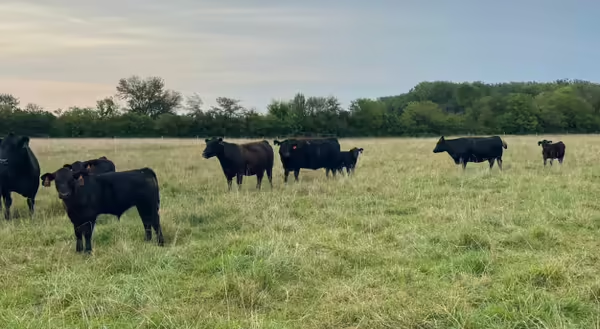
Rotational grazing is a popular choice when it comes to putting cattle out on pasture. When using this grazing plan, cattle spend time grazing one paddock before moving to the next. This gives all open paddocks time to “rest” between grazing cycles. When using a rotational grazing system, how often should you rotate cattle from pasture to pasture to ensure optimal results?
Rotating cattle based on forage growth is beneficial for the animals and the grass they’re grazing. Forage growth is split into three stages. Stage one is when the grass is too short (2-4 inches tall) for optimal grazing and is very susceptible to overgrazing. Moving cattle before the grass is at least four inches tall can cause the grass to stunt and die and weed growth to increase.
Stage two of forage growth is when the grass is at its highest quality, 6-12 inches tall. During this stage, grass is the most palatable and contains good protein, energy, and adequate fiber. This is the optimal grazing stage for uniform grazing.
Stage three of forage growth is when the grass has the highest fiber content. The palatability in this stage is low, and the high fiber content causes slower digestion. Often, forage that is too tall (over 12 inches tall) for efficient grazing has headings and flowers forming. Over-mature forage will be lower in protein content. This combined with lower palatability results in poorer animal performance.
Illinois predominantly grazes cool season grasses like fescue, bromegrass, and orchard grass. Forage height suggestions listed above are geared towards cool season grasses.
Many factors can affect the rotational grazing of cattle. Understanding where your grass is in terms of growth can be a good resource. A grazing stick can be a helpful tool to determine where your pasture is when it comes to growth, start and stop grazing heights, and rest periods.
Another way to see if your forage is ready to be grazed after resting is by looking at the blades of the grass. When cattle graze, they cut off the grass blades, usually leaving behind a flat top. As forage begins to grow back during rest periods, the blades of grass will slowly converge to a point again indicating that it has recovered and is ready to be grazed.
When deciding a time to move cattle in a rotational grazing system, observing the forage growth stage can provide information on grass health that is beneficial to the herd.
About the Author
Mabry Bruhn is a student at the University of Illinois Urbana-Champaign who works in beef production, research, and producer outreach as a University of Illinois Extension intern in the I-BELIEF program through the Department of Animal Sciences in the College of Agricultural, Consumer and Environmental Sciences. This article has been reviewed by Extension Commercial Agriculture Educator, Travis Meteer.